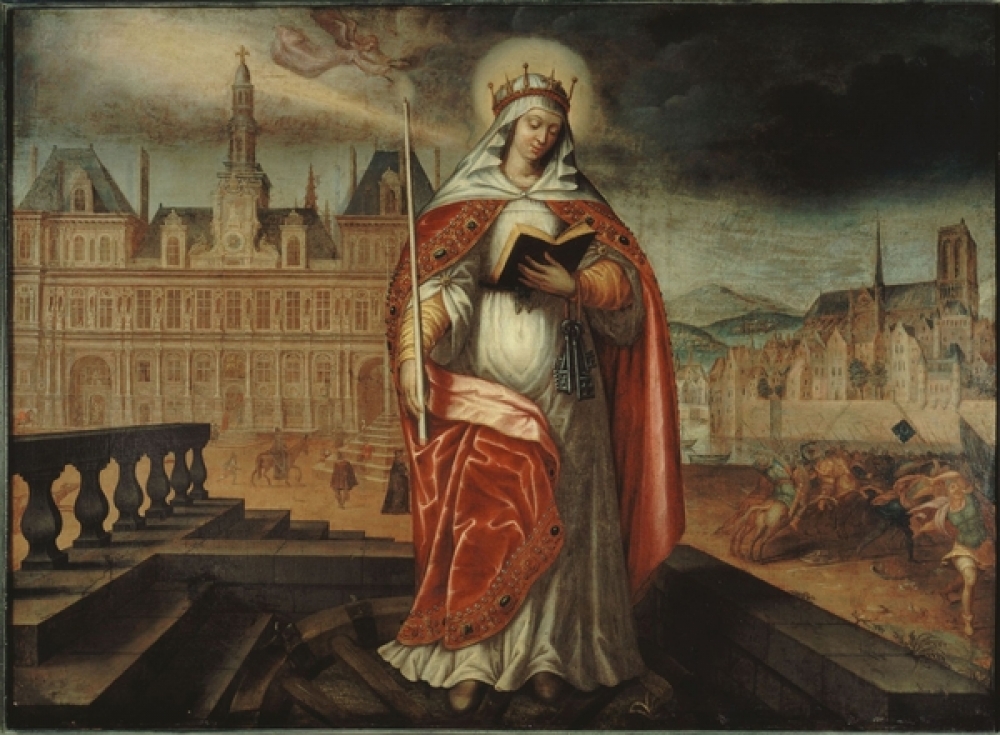
Who was Genevieve, the Patron Saint of Paris?
The former church that became the Pantheon, the hill that occupies the greater part of the Latin Quarter, and the library built in 1851; the places reminding us of the importance of Genevieve, patron saint of Paris, are numerous. But who was this woman who lived in the fifth century? This is her story.

King Attila vs. Peasant Genevieve
In 451, what is now northern France was the scene of fratricidal struggle. Attila, king of the Huns, invaded the land with an army composed of Burgundians, Alamans, Franks and other Germanic peoples. Faced with this battalion of several thousand men, the Celts and Romans, supported by the Visigoth and some coalition peoples, struggled to defend themselves.
Attila advanced further into Gaul, destroying all the cities on his way and taking possession of much of the land east of Paris. Although the enemy was still far away, the Parisians knew that the Huns were coming quickly towards them. Terrified, they prepared to flee, abandoning their city and their possessions.
A pious 28-year-old peasant girl named Genevieve then spoke to calm the spirits and give courage to her fellow citizens. She convinced the inhabitants of Paris not to abandon their city to the Huns of Attila. Her words will remain famous: “People of Paris, my friends, my brothers, they are deceiving you; your defenders who are calling you to flee are only scaring you in order to rob you; Attila advances, it is true, but he will not attack your city; it is in the name of God that I assure you of it. ”
Clamor and approval are heard in the crowd and the Parisians were reassured. A young woman so pious and charitable can only be endowed with the gift of prophecy! The sequence of events will prove them right. Attila and his army did not try to invade the city and instead, headed for Orleans (Aurelianum), which they besieged for long weeks. The legend of Genevieve, holy among the saints, is made, but another event will definitely seal her status 25 years later.

Feeding the Hungry Parisians
Genèvieve demonstrated her bravery and helped the people of Paris a second time. In 476, Childeric, the king of the Salian Franks, a Germanic tribe, blockaded the city. The prolonged siege created a serious food shortage that brought the citizens to the starvation point. One night, Genèvieve led 11 boats out onto the river, rowing past the enemy’s siege lines. Once safely across, she went from village to village, begging for food. Later that night, she returned to Paris, again slipping safely past the blockade, with boatfuls of precious grain.
When he heard about her deed, Childeric was impressed with Genèvieve, even though he was a pagan and she was a Christian. After the siege had ended, he sent for her and, out of admiration, he asked what he could do for her. She said to him, “Release your prisoners. Their only fault was that they so dearly loved their city.” He granted her wish, and later performed other merciful acts at her request.

Her Legacy Continues
In the centuries since, Parisians have prayed to Genevieve in times of trouble and to help save their beloved city from attacks and plagues. For centuries, her body was taken in a procession from the church of St. Etienne du Mont (near the Pantheon in the Latin Quarter) to Notre Dame on the Ile de la Cite. This was done to bless the city. This procession stopped during the great French Revolution when revolutionaries took her body and relics to the square in front of Hotel de Ville, and set them on fire destroying them.
Today, you can visit the church dedicated to the patron saint. It is located on top of the Saint Genevieve hill in the Latin Quarter. Inside, you will see her empty golden tomb and a case containing the few remaining relics. The case is placed high above the altar so it will be much harder for any future revolutionaries to steal them.
Sorry, the comment form is closed at this time.






